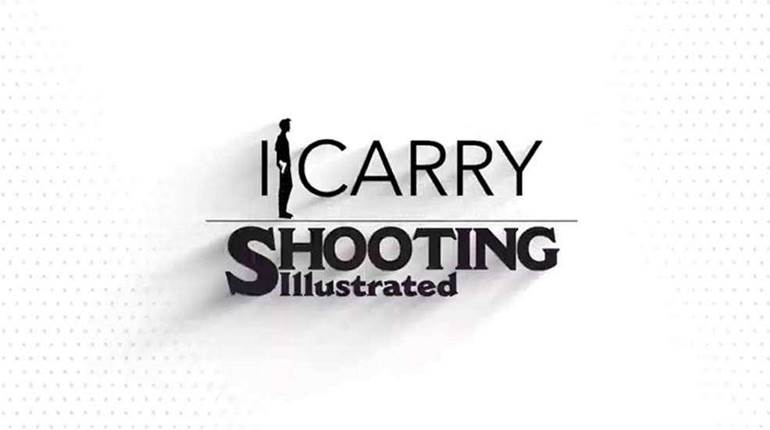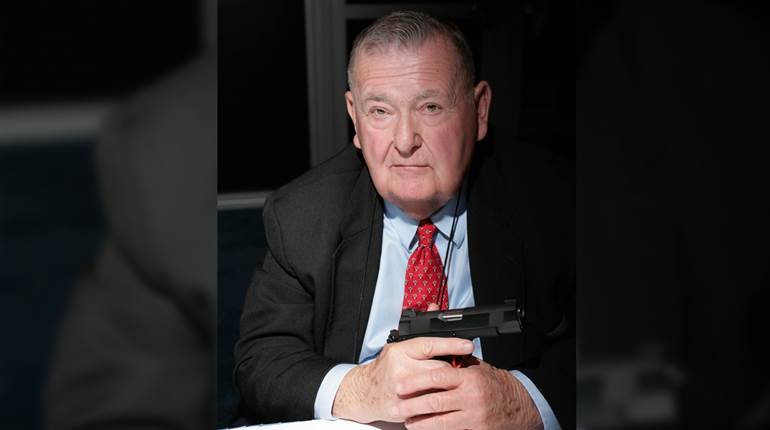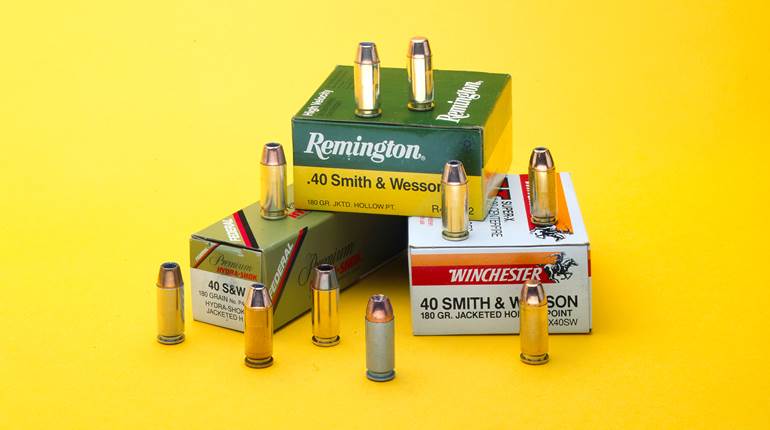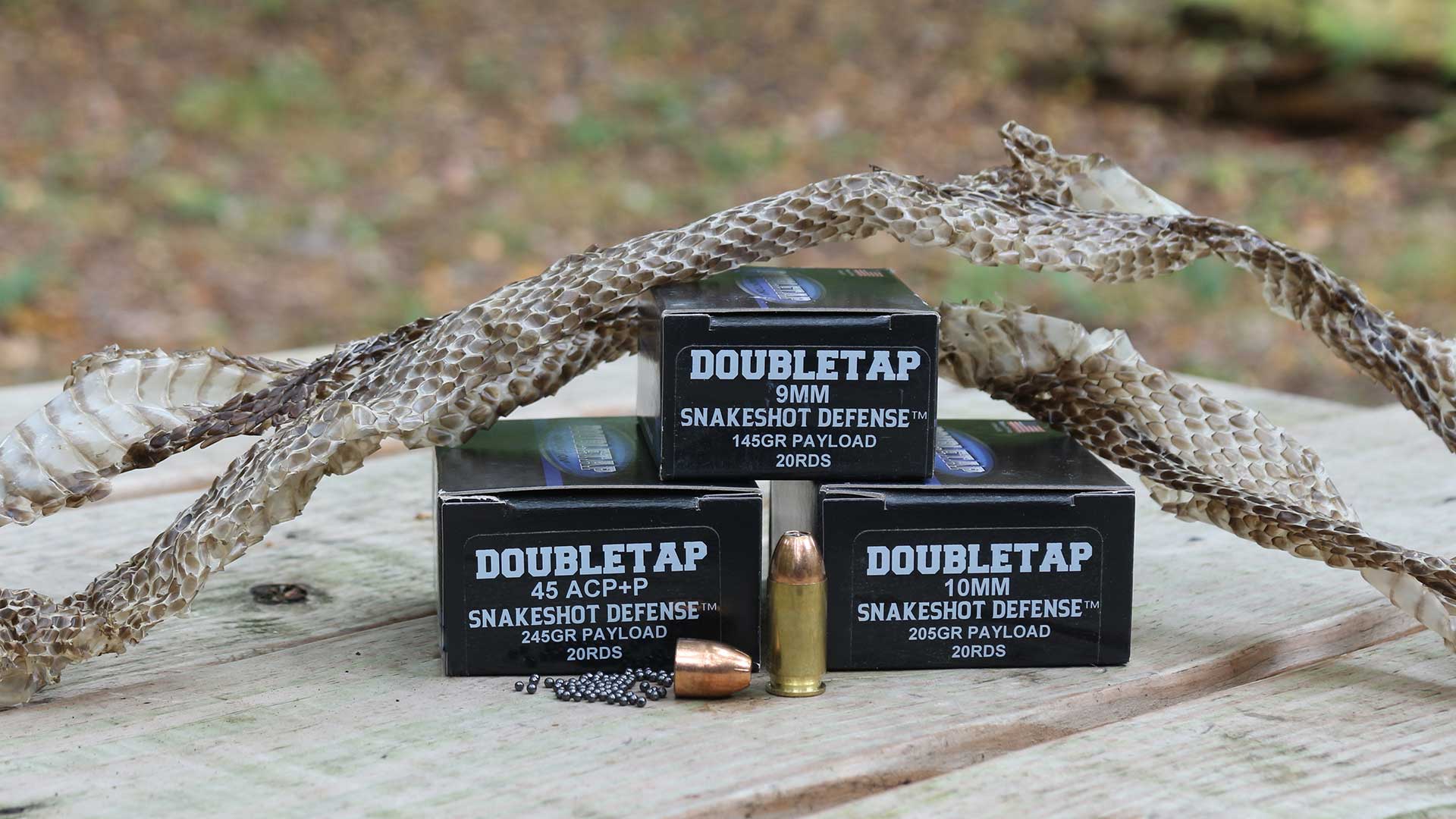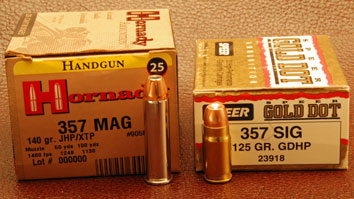
In past years, various writing projects have caused me to research a couple of cartridges with similar sounding names—the .357 Mag. and the .357 Sig. Trying to match the two is like comparing apples and oranges. It can be done, but doing so produces rather little in the way of really meaningful data. Nonetheless, let's take a look.
The .357 Mag. is a wonderful cartridge introduced in 1935 as the first really high-velocity revolver cartridge. It is a remarkably versatile round and any gun chambered for it will also fire .38 Spl. loads, so it is really a gun that provides a big part of the versatile tab. But it is also true that the .357 Mag. cartridge is available in loadings with bullets running from 95 to 180 grains. That gives this vintage cartridge amazing versatility. Literally, you can find loads that deliver short range, low recoil speedsters of around 100 grains at zippy speeds and others that use heavier bullets (sometimes close to 200 grains) at a little more sedate velocities. Depending on personal preferences on how to best approach the shooting job at hand, a .357 Mag. gunner has many choices.
Not so with the .357 Sig. This auto pistol cartridge is essentially a .40 S&W necked down to take a .355-inch bullet. The case is reminiscent of the .30 Luger, except for a larger size, if not length. Intended for 9 mm sized pistols like the Sig P229, the cartridge is available with a smaller variety of bullet weights than the .357 Mag. Bob Forker's excellent book “Ammo & Ballistics 4” lists a few loads with 115-grain and lighter bullets, as well as a few with 140 and heavier. But the near universal choice for this round is a 125-grain JHP bullet. I have had a considerable amount of shooting experience with this type of ammo in a couple of different pistols. The greatest strength of the concept is functional reliability—the small bullet feeding into a large chamber just plain works. You can't really compare the two in the broad sense, but as a personal defense round, there is some logic in a shootout.
Police agencies once used the Magnum extensively and most commonly issued 125-grain ammo for it. Although the 125s were not the only police .357 loads, they were the most popular. Several police departments now use .357 Sig pistols, and the 125-grain JHP load is popular. In this sense—Magnum versus Sig—a comparison is in order, but only if you limit the field to that single bullet weight. I once did this and the results were startling. I used a selection of typical loads in the 125-grain bullet weight in both calibers, and the guns involved were of comparable barrel length—a 4-inch S&W revolver against a 4.2-inch Sig pistol. There were eight different loads in each caliber, and I fired ten rounds of each through the appropriate guns, chronographing with an Oehler Model 35P chronograph.
While the fastest single load—a red-hot 125-grain JHP—was a .357 Mag., the average velocity of all .357 Mag. loads was 1,270 fps. The average velocity for eight different .357 Sig loads was 1,350 fps. Although I have been accused of all manner of skullduggery in publishing these results, the fact remains that the Sig outruns the Magnum. It is also notably easier to shoot, with less felt recoil and much less muzzle blast. As pistol cartridges go, the Sig functions very reliably and appears to be easy on the gun. Finally, I can't leave the subject without mentioning the obvious. A fully loaded .357 revolver offers six or seven rounds on tap and a fully loaded .357 pistol gives you up to seventeen rounds (depending on model).












